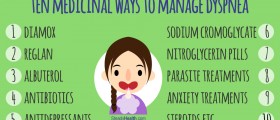
What is Altitude Sickness?
As the name itself might suggest,altitude sickness represents a group of many health problems onemight encounter once exposed to places which are quite high incomparison to the sea level. Namely, without proper acclimatization,a person may experience the symptoms of altitude sickness even whilespending time at an altitude of 8000 feet. Advancing to 12000 feetwill only result in more serious symptoms which may even be deadly.The beginning of an altitude sickness involves having headaches,being exhausted, dizzy and nauseous. However, as the sicknessadvances, you are likely to develop high altitude pulmonary edema orhigh altitude cerebral edema.
So, it is not hard to conclude thatmany people who visit ski resorts tend to experience altitudesickness. We all need to advance through serious heights gradually.Any rushes are capable of triggering all the negative symptomsmentioned above.
What Causes Altitude Sickness?
Basically, the higher you are, incomparison to sea level, the more you need to breathe since you willbe breathing in less oxygen. This process of increased breathingmakes your heart pump blood faster but will less productivity. In thelong run, this can cause health problems. Moreover, while spendingtime in high altitudes your capillaries leak fluid which gets to yourlungs or brain, triggering various problems there.
One may suffer from a chronic case ofaltitude sickness, if he/she lives in high altitudes at all times.However, those who get sick by ascending to these altitudes actuallysuffer from an acute case of altitude sickness.
Manifestations of Altitude Sickness
When crossing the altitude of 8000feet, a person suffering from this condition will start havingheadaches, accompanied with a lack of appetite, nausea and vomiting.Pins and needles are a common sensation in this situation along withinsomnia, shortness of breath, swelling of the hands and severalother symptoms.
However, if you start coughing in a drymanner or develop a fever, panting even when you are supposed to beresting, you should be treated immediately since these are all signsof a serious, deadly altitude sickness. Brain swelling is possiblehere, along with an increase in vomiting, lack of proper motor skillsand loss of consciousness.
In these situations it is best to havethe troubled person transferred to a lower, safer altitude.Sometimes, people with moderate symptoms start feeling well even whenthey are lowered for just a 1000 feet. Once adequate altitude hasbeen reached, the person is to stay there for at least 24 hours,getting used to the altitude, resting and restraining him/herselffrom smoking, consuming a lot of fluids.

















Your thoughts on this
Loading...